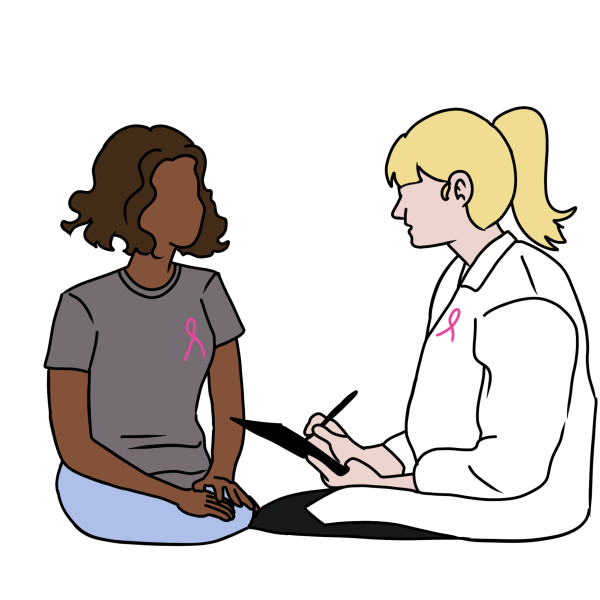Pink ribbons pinned to book bags and clothes, the subtle addition of pink in sports uniforms and signs in stores about proceeds going to breast cancer awareness define October every year. Breast Cancer Awareness Month has turned October pink since 1985, when it started out as a week-long awareness campaign by the American Cancer Society.
In 1992, The Susan G. Komen Breast Cancer Foundation and cosmetics brand Estée Lauder partnered to create and publicize the use of a pink ribbon for breast cancer awareness by giving out 1.5 million ribbons along with informational cards about breast exams at Estée Lauder Makeup Counters.
Since then, the pink ribbon has become a national symbol for breast cancer and its presence in October reminds people internationally to get screened, donate to treatment centers, fund research for the cure and more.
As college students, breast cancer may not be something one is worried about just yet, unless one is aware of their family history with the disease. Young women should inquire about their family’s history with breast cancer in order to be proactive and take charge of their health. It is also important to note that though breast cancer is most commonly found in women, 1 in 100 breast cancer diagnoses is found in a man. The Center for Disease Control recommends those with known moderate to strong family histories of breast cancer to consider genetic testing for mutations in the BRCA1 and BRCA2 genes, which are supposed to protect against certain cancers. With specific mutations in those genes, one can be more susceptible to breast, ovarian and other cancers.
It is important to note, however, that finding a genetic mutation does not mean one will develop any of those cancers, just that the chances might be higher. What genetic testing and counseling does is let patients know that they should not skip recommended screenings and mammograms in order to catch any possible cancers early, should they ever occur.

Even those without higher genetic susceptibility should take cancer screenings seriously. The CDC recommends women 50 years and older with average risk of breast cancer should aim to get a mammogram every two years while women between 40-49 years should consult their doctor about the benefits or risks of screening before the age of 50. While those ages seem a lifetime away for college students, it doesn’t hurt to be informed now, for both yourself and the other women in your life who may be older.
Breast cancer awareness efforts have put the disease on the radar of many women, but it is not only breast cancer that impacts the world of women’s health. Young women in particular have a responsibility to screen for another type of cancer starting at the age of 21, as recommended by the CDC. Cervical cancer can be checked for by getting a pap smear. Doctors use pap smears to check for precancers, which are “cell changes on the cervix that might become cervical cancer if they are not treated appropriately.”
The seemingly archaic practice of using a speculum to conduct pap smears and general pelvic exams deters many young women from making that first gynecologist appointment out of fear or anxiety.
The invention of the speculum dates back to 1845 when surgeon James Marion Sims was experimenting on enslaved women to further the field of gynecology. With those grim beginnings in mind, it is unsettling that gynecologists still use an instrument invented about 200 years ago with such negative origins. Other factors also explain the anxiety surrounding the instrument such as general fear of an instrument being used in such an intimate part of the human body. That fear can go as far as trauma for sexual assault survivors.
It is no secret that the origins of gynecology have been built on the mistreatment of enslaved women and overall questionable treatment of women. However, the once male dominated field has flipped to female-dominated. In 1970, only 7% of gynecologists were female as opposed to today’s approximately 85%. Along with the shift in gender demographics, there is new research on instruments and procedures that might replace the use of speculums in gynecology unless absolutely necessary. The majority of those methods and instruments are not yet available for physicians to use just yet, but the fact that women are working on making gynecology less intimidating for other women is a step in the right direction.
Women’s healthcare is soaring to new heights and patients should take advantage of all it has to offer, especially by following the recommendations when it comes to cancer screenings. It is never too early to start thinking about what one could be doing to ensure they know what is happening within their own bodies.
This Breast Cancer Awareness Month, remember those who lost their lives in their battle against breast cancer, those who won their battles but were left with both physical and mental scars and anyone else who has been affected by breast cancer either directly or indirectly. Honor them by doing what you can to further the research, fund treatments and, of course, getting screened as soon as your doctor recommends.

